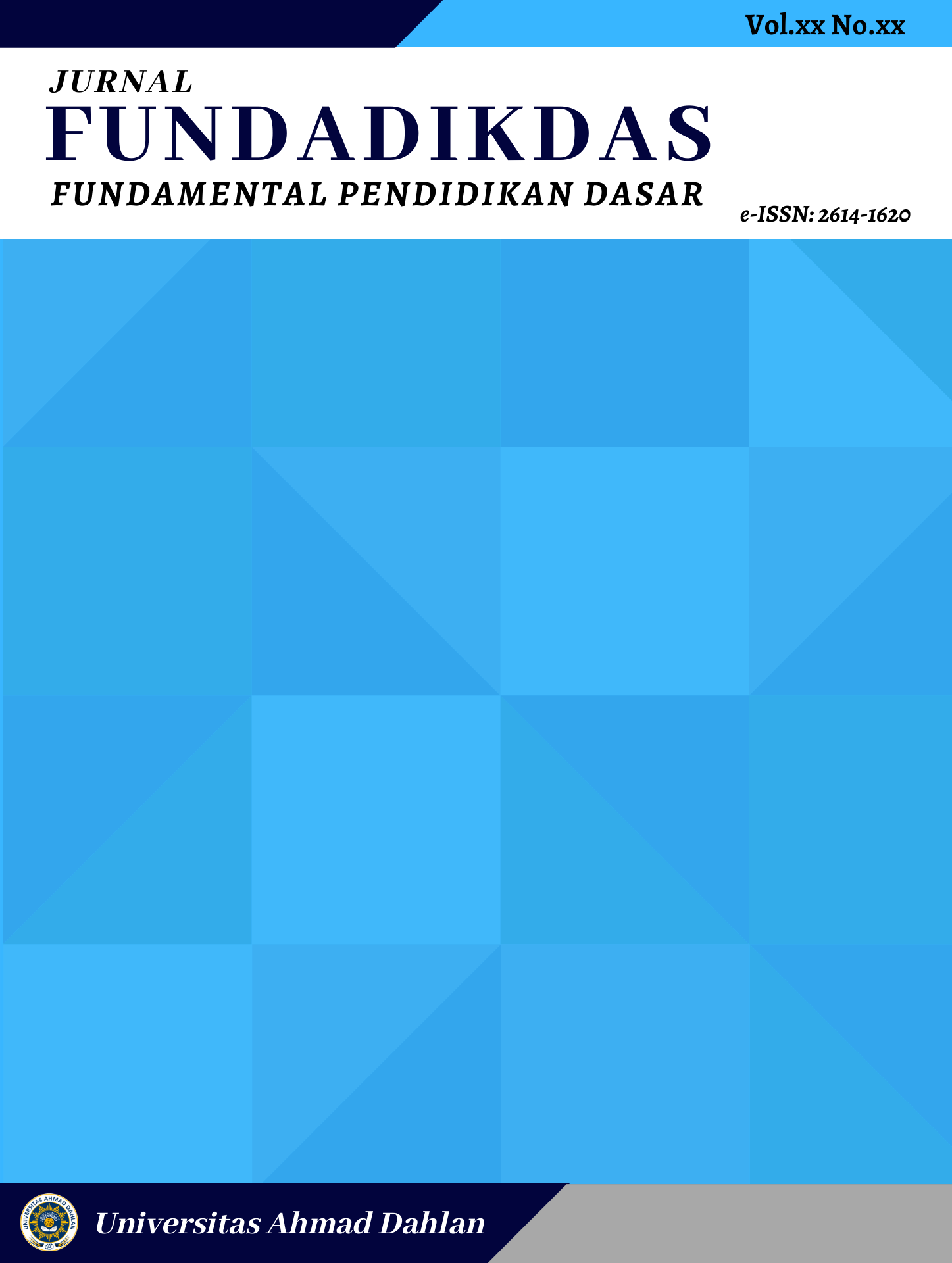IMPLEMENTASI PROGRAM ADIWIYATA DI SD NEGERI BHAYANGKARA YOGYAKARTA
DOI:
https://doi.org/10.12928/fundadikdas.v1i1.69Keywords:
research, qualitative, implementation of adiwiyata program, environmental education.Abstract
SD Negeri Bhayangkara Yogyakarta is one of the Adiwiyata schools in DIY Province that implements the Adiwiyata program. The purpose of this research is to know the implementation of Adiwiyata program as well as to know the supporting factors and factors inhibiting the implementation of Adiwiyata program in Bhayangkara State Elementary School Yogyakarta.
The type of this research is descriptive qualitative. Subjects used are principals, Adiwiyata school teams, students, and teachers. Meanwhile, the object of this research is the implementation of Adiwiyata program in Bhayangkara State Elementary School. Data collection was obtained through interview, observation, and documentation.
The results of Adiwiyata program implementation in Bhayangkara State Elementary School based on four components are as follows. 1) Environmentally sound policies are contained in school vision, mission and objectives, curriculum structure content integrated with PPLH efforts, and RKAS schools allocated 20% for PPLH activities. The inhibiting factor of this policy is that there are some students who have no concern for the environment. 2) The environment-based curriculum uses the 2013 curriculum containing environmental materials. The inhibition of environmental curriculum is the existence of some teachers who are less understanding and less creative in developing learning.
Participatory activities involving all members of the school and community elements to participate in PPLH activities. But there are still some parents who have not fully understood the activities of the school. 4) Eco-friendly facilities and infrastructure owned quite a lot and quite complete and used for learning. But there are still some facilities and infrastructure that have not been used optimally.
References
Maryani, Ika. 2014. “Evaluasi Pelaksanan Program Sekolah Adiwiyata Ditinjau dari Aspek Kegiatan Partisipatif di SD N Ungaran 1 Yogyakartaâ€. Jurnal Pemikiran dan Pengembangan Sekolah Dasar Jilid 1 Nomor 3 April 2014. http://eprints.uad.ac.id/2788/1/MAKALAH%20JP2SD.pdf. Diakses pada 18 April 2017 pukul 18.06
Muslicha, Anisa. (2015). “Metode Pengajaran dalam Pendidikan Lingkungan Hidup Pada Siswa Sekolah Dasar (Studi Pada Sekolah Adiwiyata di Jakarta)â€. Jurnal Pendidikan Volume 16, Nomor 2, September 2015. http://www.e- jurnal.com/2016/05/metode pengajaran-dalam-pendidikan. html. Diakses pada 18 April 2017 pukul 17.00
Moleong, Lexy J. (2012). Metodologi Penelitian Kualitatif. Bandung: PT Remaja Rosdakarya.
Sugiyono. (2015). Metode Penelitian Pendidikan. Bandung: Alfabeta.
Syaodih, Nana Sukmadinata. (2013). Metode Penelitian Pendidikan. Bandung: PT Remaja Rosdakarya.
Undang-undang Republik Indonesia Nomor 32 Tahun 2009 Tentang Perlindungan dan Pengelolaan Lingkungan Hidup.
Downloads
Published
How to Cite
Issue
Section
License
Authors who publish with Jurnal Fundadikdas (Fundamental Pendidikan Dasar) agree to the following terms:
- Authors retain copyright and grant the journal right of first publication with the work simultaneously licensed under a Creative Commons Attribution License (CC BY-SA 4.0) that allows others to share the work with an acknowledgment of the work's authorship and initial publication in this journal.
- Authors are able to enter into separate, additional contractual arrangements for the non-exclusive distribution of the journal's published version of the work (e.g., post it to an institutional repository or publish it in a book), with an acknowledgment of its initial publication in this journal.
- Authors are permitted and encouraged to post their work online (e.g., in institutional repositories or on their website) prior to and during the submission process, as it can lead to productive exchanges, as well as earlier and greater citation of published work.

This work is licensed under a Creative Commons Attribution-ShareAlike 4.0 International License.







